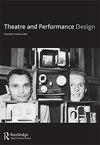From capture to texture: affective environments for theatre training in virtual reality (VR)
Q2 Arts and Humanities
引用次数: 0
Abstract
ABSTRACT The notion of ‘pre-expressivity' is central to the field of ‘theatre anthropology', explored by Eugenio Barba and his theatre group Odin Teatret. It refers to the elementary level of the energetic dynamics that render an actor's body scenically ‘alive' and 'present'. In the current study, we explore the potential of immersive technologies and bodily interaction interfaces for supporting the transmission of embodied knowledge. We begin by outlining a critical epistemological framework that calls for new accounts of knowledge distribution. We describe the process of mapping different training strands developed by Odin Teatret's actors, using motion capture technology. Further on, we approach the translation of such embodied practices into data and, consequently, into an immersive experience of archival navigation. In our study, we used audiovisual objects as environmental constraints, what we term as immersive archi-textures, and employ Laban efforts applied to motion capture data analysis as a model for qualifying movement patterns. We will base our writings on a particular experiment, which has captured Odin actress Roberta Carreri’s exercise Six States of Water within the virtual archive. In this exercise, the trainee is called to perform a specific score of actions with different qualities of energy, translated as different states of water.从捕捉到纹理:虚拟现实(VR)戏剧训练的情感环境
“前表达性”的概念是“戏剧人类学”领域的核心,由Eugenio Barba和他的戏剧团体Odin Teatret探索。它指的是基本的能量动态,使演员的身体看起来“活着”和“在场”。在当前的研究中,我们探索了沉浸式技术和身体交互界面在支持具身知识传播方面的潜力。我们首先概述了一个关键的认识论框架,该框架要求对知识分布进行新的描述。我们描述了映射由奥丁剧院的演员开发的不同训练链的过程,使用动作捕捉技术。进一步,我们将这种具体化的实践转化为数据,从而转化为档案导航的沉浸式体验。在我们的研究中,我们使用视听对象作为环境约束,我们称之为沉浸式建筑纹理,并将Laban应用于动作捕捉数据分析作为确定运动模式的模型。我们的文章将以一个特殊的实验为基础,该实验在虚拟档案中捕获了奥丁女演员罗伯塔·卡瑞里的练习《水的六种状态》。在这个练习中,受训者被要求用不同的能量质量来执行特定的动作分数,转化为不同的水状态。
本文章由计算机程序翻译,如有差异,请以英文原文为准。
求助全文
约1分钟内获得全文
求助全文
来源期刊

Theatre and Performance Design
Arts and Humanities-Visual Arts and Performing Arts
CiteScore
0.40
自引率
0.00%
发文量
14
 求助内容:
求助内容: 应助结果提醒方式:
应助结果提醒方式:


